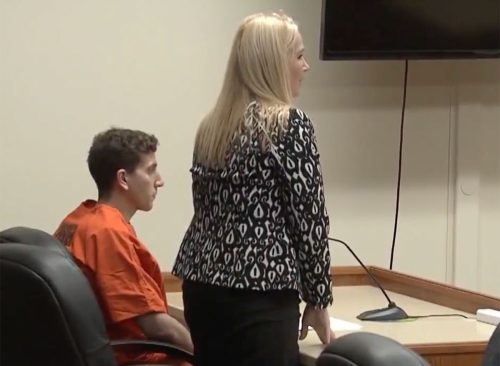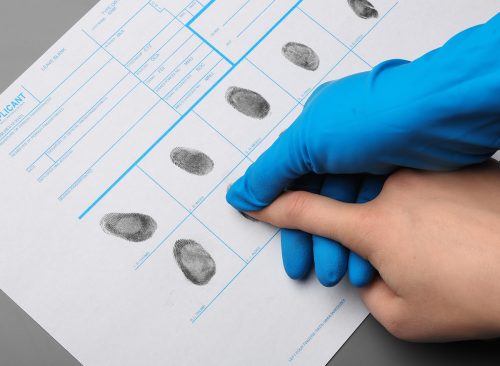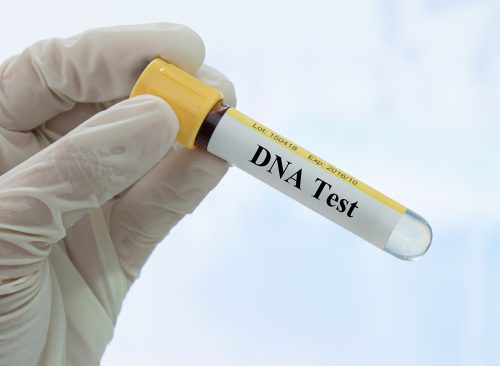DNA Profile Use in Kohberger Case Forms Division: “Un-American” or Another Police “Tool”?
A new technique used to narrow down a suspect pool.

A few years ago, DNA testing kits like Ancestry and 23andMe were some of the most popular holiday gifts for loved ones. While spitting into the little vials and sending them back to a lab to analyze DNA, the last thing on most people’s minds is probably the fact that they could implicate themselves or loved ones in an unsolved crime. However, as evidenced by the Bryan Kohberger murder case, they very well could be.
One key piece of evidence against the accused killer is his DNA on the knife sheath left behind at the scene of the Moscow Idaho murders, which the FBI matched using public genealogy websites. However, the public is torn as to the ethics band legality of it.

Last week prosecutors confirmed that law enforcement matched the DNA found on the knife sheath to that of Kohberger after submitting the DNA to public genealogy websites. The new technique is known as investigative genetic genealogy (IGG), and the jury is still out as to the unregulated method, which some say violates civil liberties.

After the prosecution revealed that they found “touch DNA” on the knife sheath, the defense now demands access to the IGG records, claiming the prosecution is “hiding” its entire case.
“Presumably, the defense is expected to accept at face value that the sheath had touch DNA just waiting for testing by all the FBI’s myriad resources,” read the court record signed by public defender Jay Logsdon. “Perhaps unsurprisingly, Mr. Kohberger does not accept that his defense does not need this information.”

The prosecution is attempting to withhold the details from their investigative process, which they consider to be an investigative technique to apprehend criminals. However, many critics maintain it violates civil rights and law enforcement transparency.

“IGG is an investigative tool, just like fingerprints, or the psychic who says where the missing person is,” Barbara Rae-Venter, an iGG expert who helped police identify Joseph James DeAngelo as the Golden State Killer in 2018, told the Idaho Statesman. “It’s the eyewitness who says they saw somebody with whatever description leaving the premises. We’re trying to narrow down who the suspect is, that’s all we’re doing.”

“Secret evidence is not fair, it’s un-American, and it’s not a good way to instill confidence in our courts,” Ritchie Eppink, a Boise-based civil rights attorney, told the Idaho Statesman. “There are constitutional implications all over this, especially when the state then wants to hide where it did (forensic genealogy) and how it did it.”

Another IGG expert Christi Guerrini, assistant professor at Baylor College of Medicine in Texas, likens the technique to a public tip line – it isn’t used as a basis for arrest but helps narrow down the suspect list. “In any investigation, when there are no suspect leads, investigators are basically looking for a needle in an impossibly large haystack that they are trying to make more manageable,” Guerrini said.
“A rationale for not including the family tree information in court proceedings is that it’s not the basis of an arrest. It helps shrink the haystack, but the person was not arrested based on who they were related to.”

Bill Thompson explained in a court filing that the FBI developed a family tree after submitting the DNA from the knife sheath to one or more unnamed genealogy websites. After processing information obtained via the method, they started to investigate Kohberger using traditional techniques. “The IGG process pointed law enforcement toward (Kohberger), but it did not provide law enforcement with substantive evidence of guilt,” Thompson wrote.
Because the prosecution doesn’t plan on using IGG evidence at the trial and the information doesn’t negate any guilty or represent a scientific test, Thompson argues that it shouldn’t be disclosed. “The genealogy conducted by the FBI resulted in a lead that pointed law enforcement to (the) defendant, but it did not result in the creation of many documents or records,” Thompson wrote. “The FBI did not download or create copies of those records.”

Advocates of the technique hope that it will become a more common practice. “Right now, it’s only being used in current cases where there’s some urgency involved,” Rae-Venter said. “I would hope that it becomes more universally used.”














